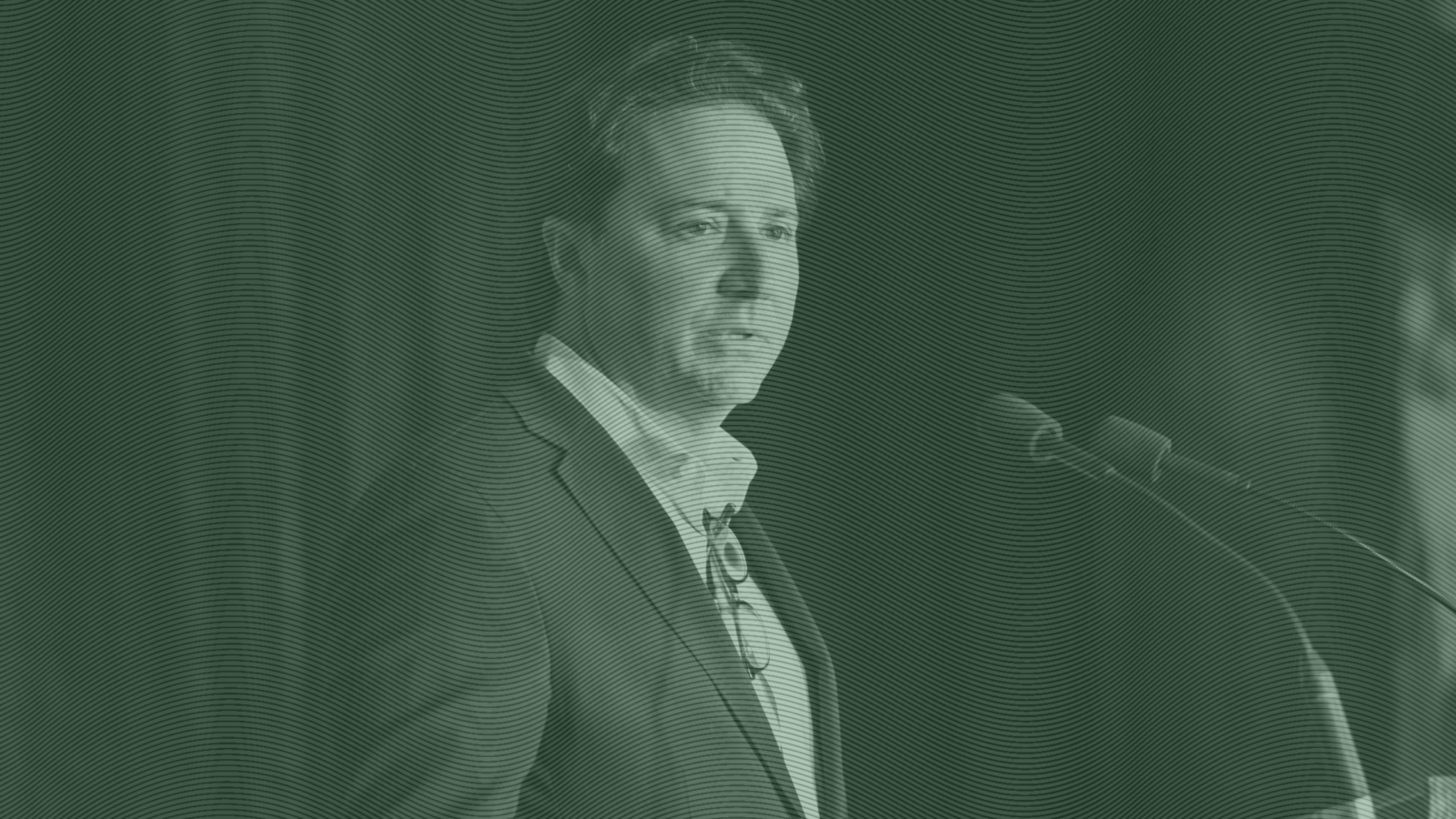Good morning.
There are few things more badass than buying a dinosaur, but famed investor Ken Griffin may have just found one.
Weeks before a record setting purchase of a $45 million stegosaurus named “Apex,” the mastermind behind the market maker Citadel Securities dropped a cool $90 million on a decked-out pad in St. Tropez. It’s the latest jewel in his impressive real estate portfolio, and adds to the allure of alternative investments that are expected to gather nearly $40 trillion in assets by the end of the decade. Who needs a 150-million-year-old skeleton, when you have two mouthwatering acres on the French Riviera?
BlackRock, Invesco Battle Over Private Asset ETFs

Famed investing pioneer Jack Bogle once called ETF issuers “fruitcakes, nut cases and lunatic fringe.” He may have just rolled over.
Leading asset managers, like BlackRock and Invesco, are now trying to do the unthinkable by devising a way to wrap up highly speculative private placements into a traditional exchange-traded fund. Once the playground of the world’s rich, private assets — like home lending, real estate, private equity, or infrastructure — could soon be up for retail consumption for the cost of a few basis points.
Almost 90% of companies with revenue greater than $100 million are privately traded, meaning the new products could provide tremendous upside for retail investors and revolutionize harder-to-access areas of the market. Currently at least 15 ETFs seek to offer some private-market exposure in the US, but there are a host of technical and regulatory hurdles to overcome to launch a full-fledged private assets ETF. Where there’s potential profits, there’s a way.
No Trespassing
The catch is a pesky little 15% limit on funds holding illiquid investments. The Securities and Exchange Commission defines illiquid investments as anything that would take longer than a week to sell without significantly impacting the price. While ETFs trade and price daily, private assets are generally marked quarterly or even annually, which is a major cause for concern.
“Private assets are not intended to be bought and sold daily,” said Christine Sol, a strategist at Signature Estate and Investment Advisors. “Just because private assets can fit into an ETF wrapper doesn’t mean it’s the best or an appropriate fit,” and the SEC’s 15% maximum is currently a “dealbreaker” for private ETFs.
Issuers may get around the rule by using so-called synthetic exposure, meaning a fund holds swaps written against a private equity portfolio, according to Bloomberg. Another option would be matching private investment performance using liquid alternative ETFs that use complicated strategies like short selling.
Never Pay Retail. Alternative providers are sniffing out tremendous opportunities to gather retail assets in the coming years. Look no further than BlackRock’s $3.2 billion megadeal for the UK-based alternative data and analytics provider Preqin as proof of the massive push; CEO Larry Fink said the company coud “index the private markets.”
Cerulli Associates estimates that financial advisors own roughly $1.4 trillion in less than fully liquid alternative investment assets in the US alone, according to new research. But, that’s expected to change:
- Cerulli researchers project alternative assets will skyrocket to $2.5 trillion by the end of 2028.
- Alternative providers have estimated that just 13% of their assets under management are from investors in the retail channel.
- However, retail investors are expected to make up 23% of alternative assets in the next three years.
Advisors Tack on New Services to Attract Richest Clients
Advisors are doing their best Swiss Army knife impressions to lure in the world’s wealthiest clients.
With the global millionaire pool growing, advisors are racing to attract the richest clients, and those in the lead are offering the most services and the best client experience. Price and relationships are still on high-net-worth individuals’ minds when choosing a financial planner, but services and client experience are the most important determining factors, according to a Cerulli Associates survey released earlier this year. Some 35% of HNWIs with more than $5 million in investable assets said services and experience were why they chose their advisors last year, up from 28% in 2020.
It’s survival of the fittest out there, and may be time to add a new blade.
The Everything Advisor
No surprise here: The rich are getting richer, and wealth is becoming more concentrated. Clients worth more than $5 million control roughly half of all investable assets in the US today, up from 27% in 2010. But there’s also more folks joining their ranks, too. The US has more than 5.5 million millionaires with at least $1 million in liquid, investable assets — a growth of 62% over the past decade, outpacing the worldwide growth rate of 38%, according to Henley & Partners USA Wealth Report.
And all those newfound (or old) HNWIs want a highly personalized one-stop-shop for all their financial needs:
- On average, HNW practices now offer 12 services, up from 10 in 2017, including everything from family governance and charitable planning to private banking and bill pay.
- The two fastest-growing services are estate planning and tax planning, with 70% and 45% of practices offering them, respectively. Both areas directly tie into the great $84 trillion wealth transfer that’s nearly upon us.
- More than 80% of HNW practice indicated that they plan to expand their services over the next five years. With more to offer, that also means advisors can up their services fees.
Special Ops: Advisors can’t rest easy thinking their clients’ children will continue to park their money in the same places. More than 70% of adult children will leave their parents’ advisor when they receive their inheritance. BlackRock recommends advisors outfit their firms with specialized staff who can meet with each member of a client’s family to understand which services they most value. And if that doesn’t work, the old bank marketing ploy of throwing in a free toaster might do the trick.
Ares Management Breaks Private Credit Fund Record at $34B

In the battle for alternative asset supremacy, there’s a new king.
The Los Angeles-based Ares Management, headed by CEO Michael Arougheti, has built a record-breaking $34 billion private credit fund that attracted roughly $15 billion in total equity commitments. The Ares Senior Direct Lending Fund III even surpassed its original goal of $10 billion and has already deployed $9 billion into 165 companies. “The middle market continues to experience significant demand for reliable capital,” Mark Affolter, co-head of Ares US Direct Lending, said in a release.
Ares, which has $428 billion in assets under management, is far from the only “shadow bank” (ooo, spooky) getting bullish on the $1.7 trillion private credit market.
It’s a Private Matter
The global financial crisis spurred federal regulators to increase scrutiny and capital requirements on traditional lenders, and last year’s regional bank failures only furthered calls for more oversight. As a result, traditional banks have reassessed their risk management and stepped away from handing out loans to every Tom, Dick, and Harry.
But when interests rates are at their highest level in more than 20 years, and there’s no clear sign of when they’ll go down, private credit’s doors are wide open:
- Morgan Stanley forecasts the private credit market will grow to $2.8 trillion by 2028, and JPMorgan describes growth in the industry as “healthy, not bubble-esque.”
- Last month, HPS Investment Partners raised $14.3 billion for a new fund, and in May, Goldman Sachs reported that it brought in more than $20 billion for its West Street Loan Partners V fund.
Too Big to Fail? While private credit sometimes sounds like another Lehman Brothers waiting to happen, that may or may not be the case. Private credit loans largely go toward massive companies with healthy balance sheets. Last summer, Oak Hill Advisors and Blue Owl Capital led a group of investors on a $5.3 billion loan to help Vista Equity Partners — a firm with more than $100 billion in AUM — refinance Finastra Group Holdings’ debt.
However, there are examples of loans entering murky territory. Recently, tech workforce development company Pluralsight shifted assets away from lenders so it could raise $50 million in new financing. Ares, one of the creditors, said it marked down the value of its loan to Pluralsight more than 50% as a result, and just last month, control of Pluralsight was handed over to its private lenders, The Wall Street Journal reported. And who owned Pluralsight. Well, Vista Equity of course.
Extra Upside
- Eyebrows Raised. A Citigroup executive who joined the bank’s wealth management division in a top position four months ago is leaving.
- Need a Rec? Morgan Stanley is one of the first major wealth management firms to allow brokers to recommend bitcoin ETFs.
- Everything, AI. Yes, AI is going to take your job if you believe this new study.
Advisor Upside is edited by Sean Allocca. You can find him on LinkedIn.
Advisor Upside is a publication of The Daily Upside. For any questions or comments, feel free to contact us at advisor@thedailyupside.com.
